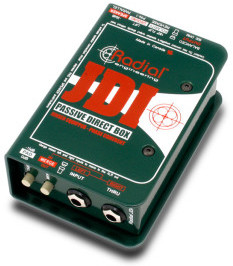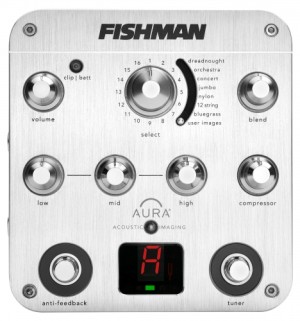Have you ever had someone tell you that you need to “DI” your acoustic guitar, but you’re unsure why? You may be wondering if it’s necessary to spend some money on a DI box. The answer to that question is “it depends”.
Let’s take a look at what a DI box actually does.
The main idea for using a DI box would be to turn an unbalanced (Hi-Z) signal into a balanced (Lo-Z) signal. If you’re not technically inclined, what this basically means is that you’re able to turn a 1/4” input into a converted XLR output.
So why is it necessary to convert the output of an acoustic guitar into an XLR (microphone) output? The main benefit is that an XLR cable contains an extra pin (ground), which is used to eliminate line noise. You will find that interference and background noise will typically occur when running cables over long distances. For instance, if you’re running a snake from stage to the mixing console, this will normally mean that a DI box will be a requirement. Not only will the snake (in some cases) only contain XLR inputs, but it’s likely to be running over a long distance to reach the mixer.
Another benefit of a DI box is the ability to split your signal (Y-split). This is necessary if you’re using an acoustic amplifier on stage, but you also want to send a separate signal to the mixing desk.
So in summary, you will need a DI box to perform the following functions:
- Convert an unbalanced signal (1/4”) to balanced (XLR);
- Eliminate ground noise and interference from distances over 20 feet;
- Split your signal in 2 parts (Y-split);
- Perform pre-EQ and tone shaping (discussed next).
When shopping for a DI box, you will find yourself faced with 2 options; namely a passive DI or an active DI. For an acoustic guitar, both will do the job just fine, however it’s important to understand the difference between the two.
An active DI requires additional power to operate, either in the form of a battery or a power supply. This means that an active DI will typically contain more functions than a standard passive DI. These functions may include an equalizer and other tone shaping abilities.
Because of the hassles associated with powering an active DI, I would recommend a passive solution such as the Radial JDI. If you require the extra functionality of an active DI, my recommendation would be the Radial J48.
To conclude, I would also like to mention the Fishman Aura Spectrum DI box. This unit is designed specifically for acoustic guitar, and comes equipped with Fishmans Aura Acoustic Imaging.
This allows you to run the output of your guitars pickup (1/4” out) into the device and then effectively replicate the 3 dimensional qualities of a microphone placed up against your instrument. Because a microphone isn’t always practical for live application, the Fishman Aura Spectrum is the way to go. Below is a short video where the product is demonstrated.



subscribe
I have an acoustic Taylor with EST pickup. I’ve used an active DI now for about a year and I have to keep the levels extremely low both on the DI and on the guitar settings to avoid major feedback. Should I get a passive DI? I like the sound the XLR gives with the DI. If I go 1/4 inch only from guitar to PA, it doesn’t provide enough pop. I play guitar in a Dave Matthews tribute band and need better sounding guitar. Thanks!